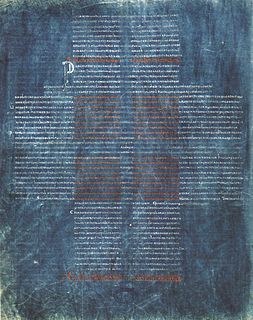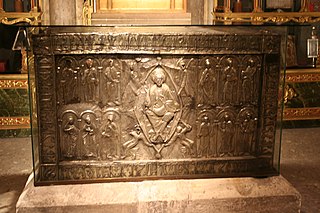 W
WThe Kingdom of Asturias was a kingdom in the Iberian Peninsula founded in 718 by the Visigothic nobleman Pelagius. It was the first Christian political entity established after the Umayyad conquest of Visigothic Hispania in 718 or 722. That year, Pelagius defeated an Umayyad army at the Battle of Covadonga, in what is usually regarded as the beginning of the Reconquista.
 W
WThe Asturian or Astur-Leonese dynasty, known in Arabic as the Banī Adhfūnsh, was the ruling family of the kingdom of Asturias and León from 739 until 1037. Under their rule, the Astur-Leonese kingdom went from a small mountain enclave to one of the dominant powers in Hispania.
 W
WPre-Romanesque architecture in Asturias is framed between the years 711 and 910, the period of the creation and expansion of the kingdom of Asturias.
 W
WThe County of Portugal refers to two successive medieval counties in the region around Braga and Porto, today corresponding to littoral northern Portugal, within which the identity of the Portuguese people formed. The first county existed from the mid-ninth to the mid-eleventh centuries as a vassalage of the Kingdom of Asturias and later the Kingdoms of Galicia and León, before being abolished as a result of rebellion. A larger entity under the same name was then reestablished in the late 11th century and subsequently elevated by its count in the mid-12th century into an independent Kingdom of Portugal.
 W
WThe La Cava Bible or Codex Cavensis is a 9th-century Latin illuminated Bible, which was produced in Spain, probably in the Kingdom of Asturias during the reign of Alfonso II. The manuscript is preserved at the abbey of La Trinità della Cava, near Cava de' Tirreni in Campania, Italy, and contains 330 vellum folios which measure 320 by 260 mm.
 W
WThe Repoblación was the ninth-century repopulating of a large region between the River Duero and the Cantabrian Mountains, which had been depopulated in the early years of the Reconquista.
 W
WThe Sudarium of Oviedo, or Shroud of Oviedo, is a bloodstained piece of cloth measuring c. 84 x 53 cm kept in the Cámara Santa of the Cathedral of San Salvador, Oviedo, Spain. The Sudarium is thought to be the cloth that was wrapped around the head of Jesus Christ after he died as described in John 20:6-7.